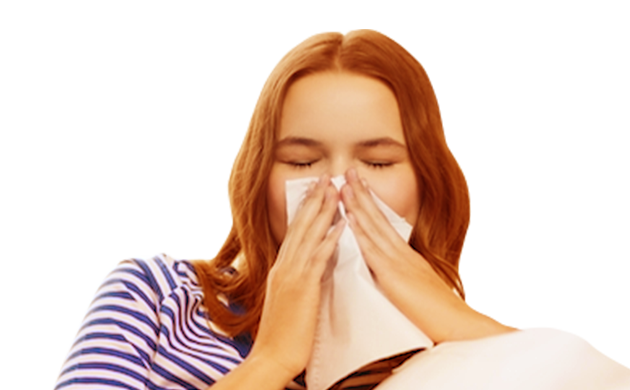With so many similar symptoms it’s often hard to tell whether you have a cold or flu. Hopefully, we’ll be able to help you tell the difference.
A cold has symptoms that often build up over 48 hours. Usually, you first get a runny nose, followed by watery eyes. Next a stuffy nose and then congestion sets in. And if you’re really unlucky, the sneezing and coughing may start. These symptoms normally last 3-10 days. They may come in stages, peaking when you feel them all at once.
Flu symptoms, on the other hand, can come on fast and a fever and chills may develop. Your body aches and has those ‘I’ve-got-a-flu-coming-on’ pains. A flu makes you feel weak and tired. The symptoms normally last 7-14 days, or up to 21 days if you’re hit badly.
Please stay at home if feeling unwell.
Key differences between a cold and flu.
Please stay at home if feeling unwell.
What are the symptoms of a cold and a flu?
The symptoms of a common cold vary from person to person. They can include:
A blocked or runny nose
Sneezing
Watery eyes
More mucus than normal
The flu is much more hard hitting. Symptoms can include:
A cough. Dry and tickly or chesty and full of mucus.
A sore throat. Similar to a cold, a sore throat can be the first sign of a flu.
A blocked nose. This may be caused by the membrane lining in your nose swelling up.
Headaches. They nearly always come with the flu. They are usually caused by an increase in temperature, dehydration and even a blocked nose.
A fever . Your body fights the flu infection and your temperature rises above 37.2ºC.
General body aches and pains. This is a sure sign you don’t just have a cold but the flu. Rest up, drink plenty of water and take care of your symptoms with CODRAL® .
What causes a cold and a flu?
A cold is an infection which can be caused by a virus known as the “rhinovirus.” ‘Rhino’ comes from the Latin word for nose as it tends to affect the upper respiratory tract including the nose.
Strangely it has nothing to do with cold climates! It comes from other people’s germs. It’s just when it’s cold, people tend to be closer together, and more likely to share germs.
Flu is a highly contagious virus, called influenza. When an infected person coughs, sneezes or speaks, the virus will travel on droplets through the air where it can be easily picked up by the next person.
How to relieve a cold and the flu?
You will need a lot of rest, plenty of fluids and time to allow your cold or flu to run its course. But there are always some extra things that you can do to help minimise your discomfort.
Keep the air moist with a humidifier to ease the throat and nose discomfort.
A soothing, warm liquid such as chicken soup can calm a sore, scratchy throat.
Wash your hands often to avoid spreading infection. If washing is not possible, keeping a small bottle of hand sanitizer in your handbag can be useful.
Take care of your symptoms with over-the-counter medicines such as CODRAL® - see below for appropriate CODRAL® treatments.
Treatments for a cold and flu
CODRAL® has a wide range of products that can be tailored to address your cold or flu and their associated symptoms. These include:
Please use our CODRAL® product selector to help you find the right relief treatment.
How to prepare for the cold and flu season
Summer or winter, a cold or flu can take its hold on you. Although there are a few things you can do to help keep a cold and flu at bay.
Start with some healthy habits
Discuss with your healthcare professional whether a flu vaccination is right for you.
Wash your hands and home surfaces regularly.
Eat foods with lots of vitamins and minerals to boost your immune system.
Make exercise part of your life to keep your immune system fighting fit.
If you do get a cold or flu, you can help prevent others from catching it.
Cover your mouth when you cough or sneeze. The germs travel through the air.
Wash your hands regularly to kill any bacteria that may cause infection. Or reach for that bottle of hand sanitizer in your handbag.
Throw away used tissues. Keeping bacteria in your pocket is a no-no.

